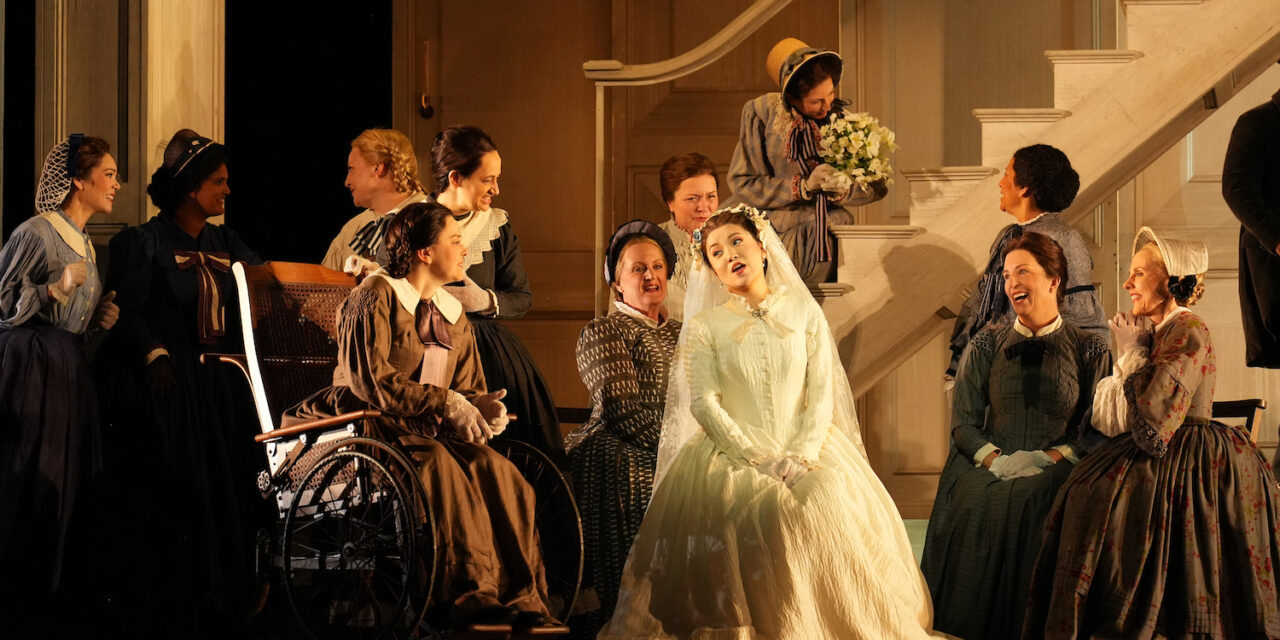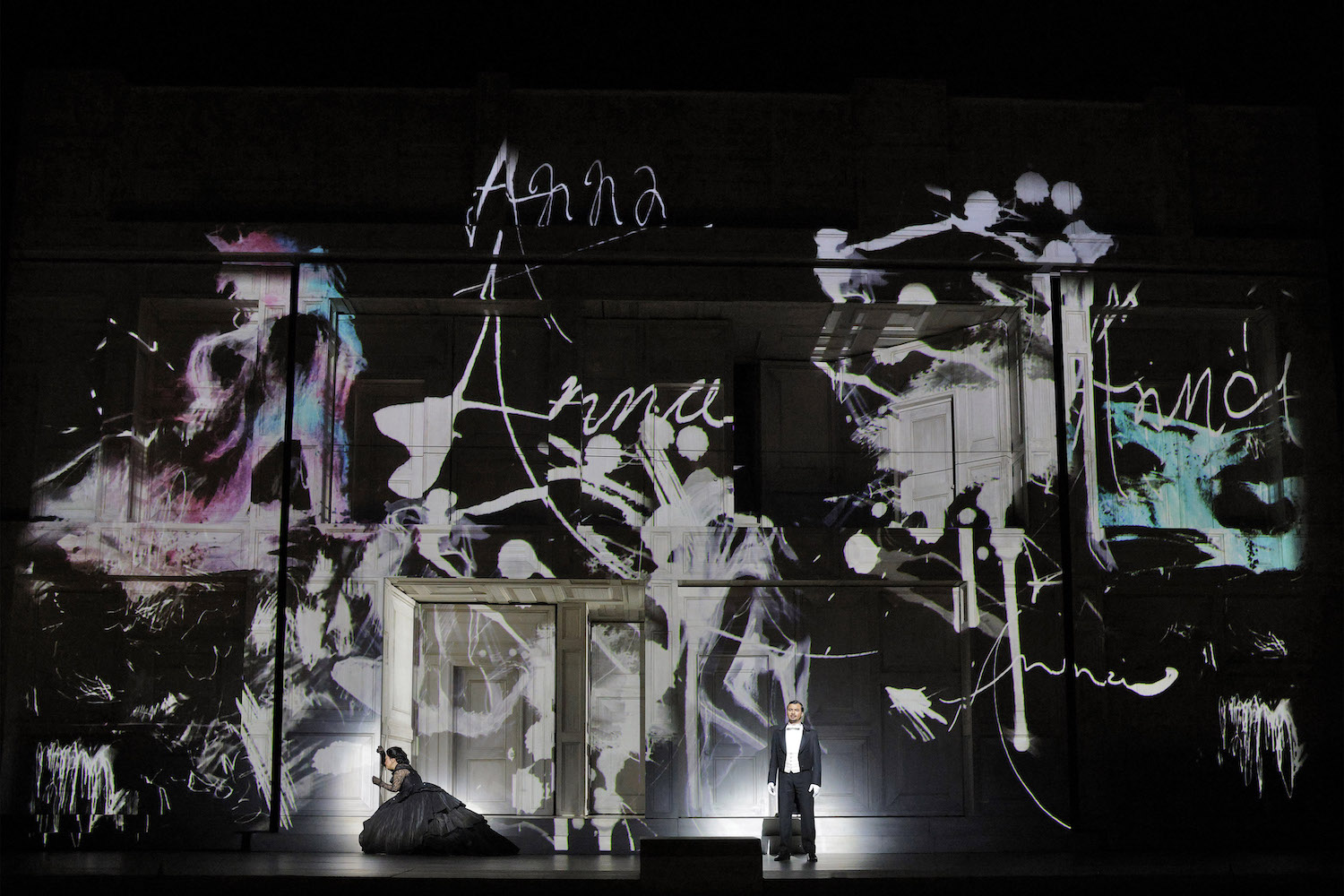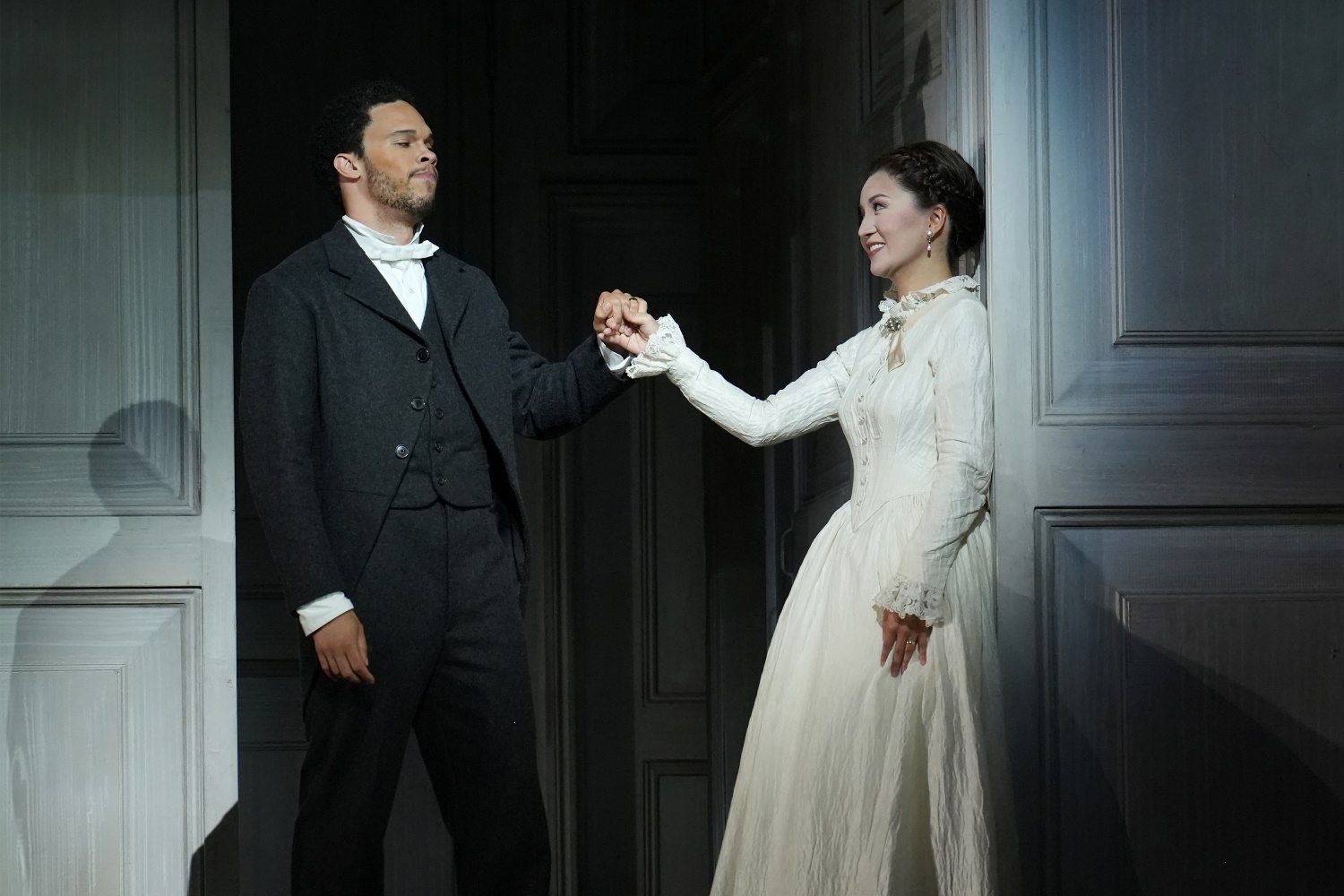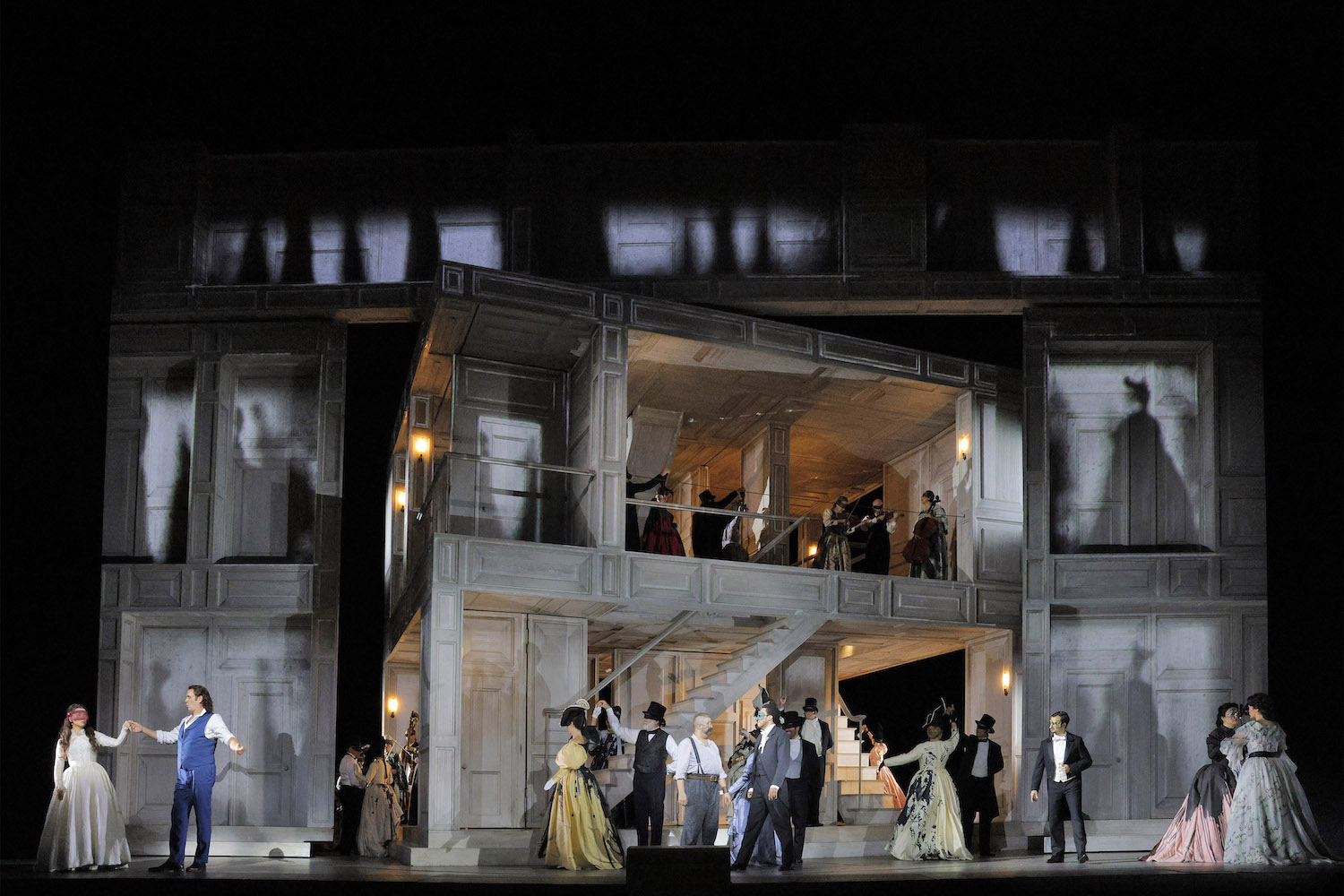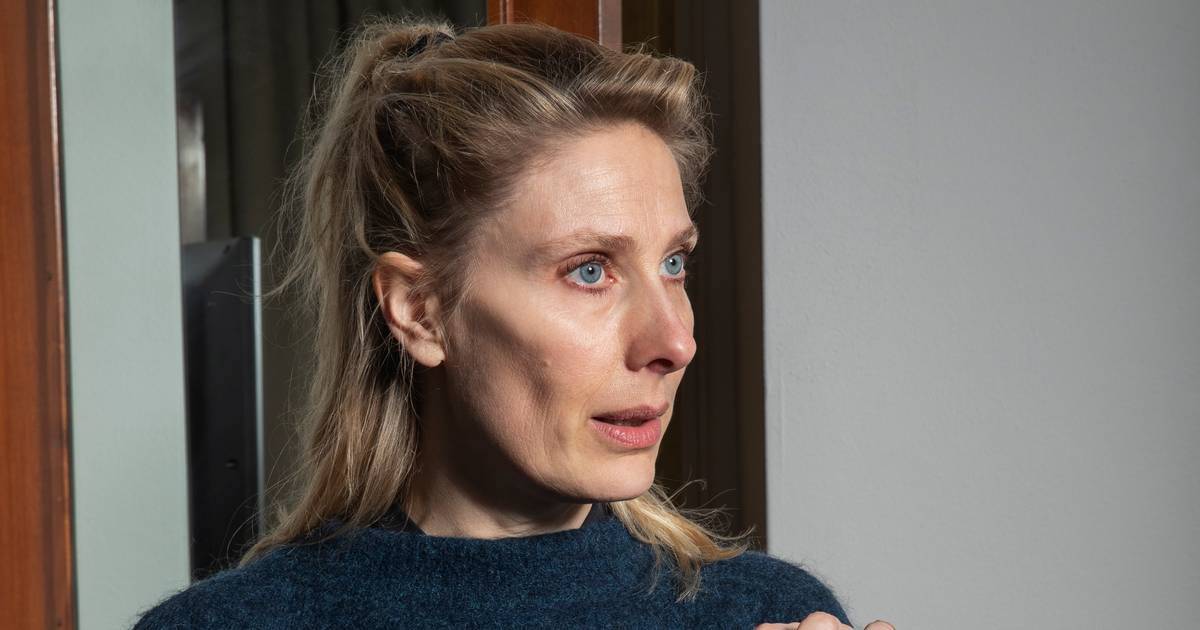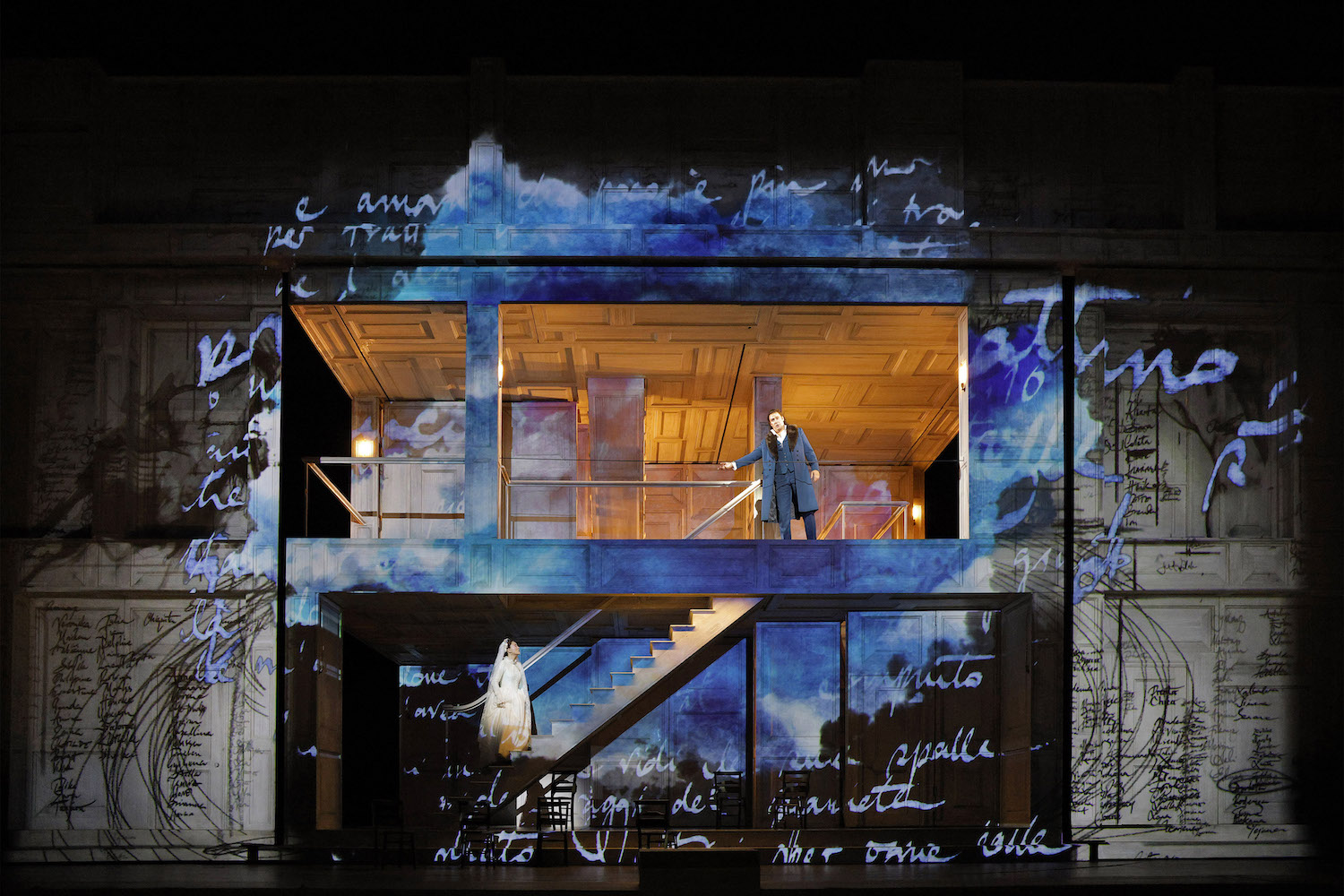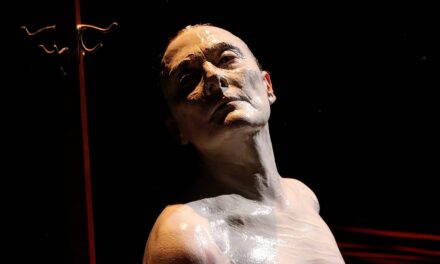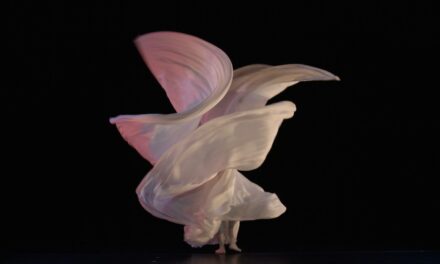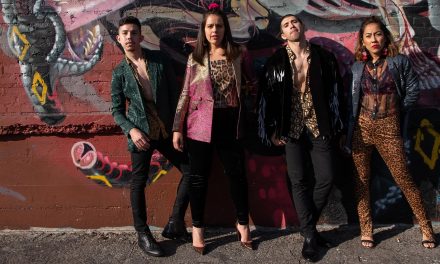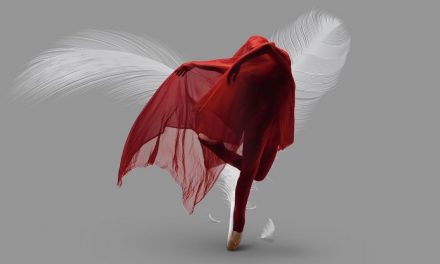When it premiered in 2014 at London’s Covent Garden, Kasper Holten’s production of Don Giovanni had the distinction of opening the opera season for the Royal Opera. Holten’s retelling of Mozart’s saga of the notorious womanizing Don Giovanni (Don Juan) arrives in Los Angeles, launching LA Opera’s 2023-2024 season with six performances through October 15 at the Music Center’s Dorothy Chandler Pavilion.
In that 2014 premiere, Signe Fabricius provided choreography and movement direction. Over the past nine years, Fabricius has continued to work with Holten as the projection-drenched production with its rotating, multi-level set has been staged at opera houses around the world. Trained as a dancer, Danish-born Fabricius established her credentials as a contemporary choreographer. In recent years, she has specialized in opera and theater, providing choreography for the dancers and working with the directors on movement for non-dancer performers.
Shortly before last week’s LA Opera opening, Fabricius answered questions from LA Dance Chronicle’s Ann Haskins about working as a choreographer in the realm of opera.
LA Dance Chronicle: How is choreography used in Kasper Holten’s approach to this opera?
Fabricius: There is an important element of dance in the Act 1 finale of “Don Giovanni.” Mozart did an amazing set up with three different orchestras, playing three different dances at the same time, starting one by one. I worked with both Kasper, but also the set designer Es Devlin and the music staff to understand the complexity, and we have developed three different sets of choristers dancing, as the set is revolving, and the different dances “appear” at the right moment. It was fun to make not just the cast, but also all of Es Devlin’s genius set, dance in tune with Mozart’s famous triple-dance.
But my work isn’t normally limited to the dancing itself. I worked closely with Kasper and Es to design the way the characters move through the maze that the set is, and we have actors working as a kind of ghosts – representing Giovanni’s suppressed conscience, coming back to haunt him – moving through the set with both a dramatic effect and a practical dimension, as they move walls into various positions for each scene.
The dancing is done by the guests at Don Giovanni’s party, ie. cast and chorus members. The actors, who move through the set to move walls and act as ghosts in Giovanni’s mind, have been recruited locally by LA Opera for this presentation of the production.
LADC: How did you become involved in the LA Opera Production?
Fabricius: I worked as movement director on the production when it was created at London’s Royal Opera in 2014. The director, Kasper Holten, and I were, and still are, working regularly on his opera productions, when movement direction and/or choreography is needed, and so he asked me to work on this production too. I am – of course – thrilled that after being seen in other venues around the world, LA Opera has decided to present our production.
LADC: Have you worked with the director Kasper Holten on other projects?
Fabricius: Kasper and I have worked together on many projects since 2009. I enjoy working with a small group of directors that I have worked with many times over the years, as we develop a “language” together.
LADC: You trained as a dancer. How did you move into choreography and specifically choreography for theater and opera where some of those involved are not trained dancers? How are those two groups different to work with or are they?
Fabricius: I enjoy working with dancers and creating complex choreography, whenever that is required in dance pieces, musicals, or some operas. But a very big part of my job today is working with actors, opera singers and others, who are not necessarily trained dancers. In a way, what I do is physical theatre, trying to help the director express situations, relationships, characters through their movement patterns, so we do not just use movement in a naturalistic way, but to match the fundamentally opera is not naturalistic, but a kind of translation also of the inner lives of characters.
LADC: As you’ve worked with production internationally at various venues, do you have to adjust your choreography as the production moves to different venues? If so, how do you make those adjustments?
Fabricius: Most of the movement work and choreography is contained inside the “house” that is the central element of the set, and this is unchanged from venue to venue. So it is not maybe so much the different venues that make us make changes and adjustments – but more that the fact that we have been working with different people, different casts, of course requires an openness to make it work for and with the specific people who will be performing the production this time. It is important that the production says what it needs to say, but the method to “say” this needs to be slightly different, when it is different people. We don’t want people just to fit in a template but to develop the production afresh as much as we can every time, whether I have the chance to work on it myself, or – as in LA – it is my brilliant revival choreographer Anna-Marie Sullivan doing it.
LA Opera – Don Giovanni (aka Don Juan) at the Music Center Dorothy Chandler Pavilion, 135 N. Grand Ave., downtown; Wed., Oct. 4, Sat., Oct. 7, & Thurs., Oct. 12, 7:30 pm, Sun., Oct. 15, 2 pm, $24-$349. https://www.laopera.org/performances/202324-season/don-giovanni/
Featured image: LA Opera Don Giovanni – photo by JC Olivera
Ann Haskins Blog appears at CulturalDaily.com

